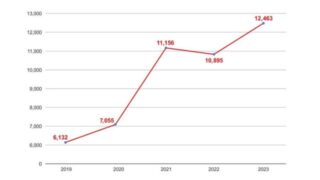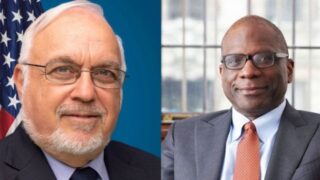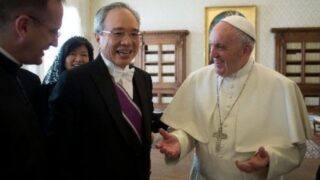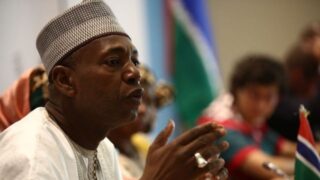The German Pope’s argument for a theological and philosophical foundation of freedom of religion did not persuade everybody, but remains a crucial reference.
by Massimo Introvigne
Article 4 of 4. Read article 1, article 2, and article 3.
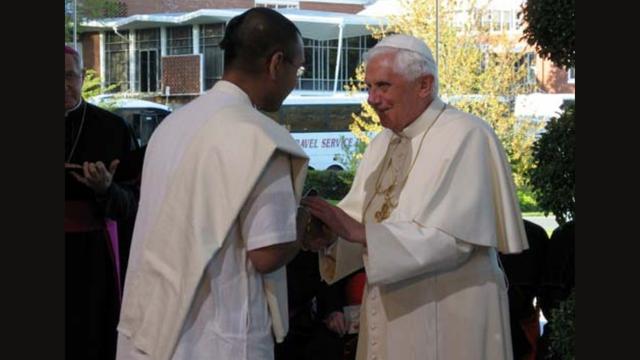

It is now time to conclude our analysis of Benedict XVI’s contribution to the Catholic theology of religious liberty. The German Pope has consistently reaffirmed that the Church cannot endorse relativism or the idea that “all religions are equal.” However, he has also clarified what meaning of the sentence “all religions are equal” is incompatible with Catholic theology (and indeed with the theology of most religions).
Religions for Benedict XVI are not “equal” theologically, philosophically, and in their relationship with the truth. To claim that all religions are equally true implies that all religions are also equally false. Each religion has a legitimate right to proclaim its belief that it teaches “the truth” and that its path is superior to others. Indeed, this is what most religions do, although in some countries today this is forbidden as “extremist.”
On the other hand, Benedict XVI also taught that religions are equal in their right to be left alone by the states. They are not philosophically or theologically equal. However, they are legally equal. All his theory of religious liberty is aimed at demonstrating that theological inequality, which allows each religion to argue that it is the only true one, and legal equality, which asks the State to grant freedom to all of them, are not incompatible.
Benedict XVI reminded those arguing, to hail or deprecate it, that Vatican II had embraced post-Enlightenment relativism, that “Dignitatis Humanae” also reaffirmed, in its own words, “the traditional Catholic doctrine on the moral duty of men [sic] and societies toward the true religion and toward the one Church of Christ.”
During both his twenty-four years of service at the Congregation for the Doctrine of Faith and his pontificate, Benedict XVI has been acutely aware of the controversies about the alleged contradiction between “Dignitatis Humanae” and the teachings on religious liberty by Pius IX, Leo XIII, and Pius XII. As we have seen in this series, he acknowledged that there was “some” discontinuity but denied there was a radical “rupture” between the old and the new teachings, not only because accepting the rupture would create difficult ecclesiological problems but also because, as evidenced by all his writings, he sincerely believed that such rupture did not exist.


However, depicting Benedict XVI as a naïve “continuist” (or perhaps one in bad faith) who ignored the deep changes in the Catholic Church’s approach to religious liberty between the 19th and the 20th century is a mere caricature. Benedict never claimed that a mere continuity existed between encyclicals such as Pius IX’s “Quanta cura” and Vatican II’s declaration “Dignitatis Humanae.” If this was his position, a cynical observer from outside might easily object that this was a simple case of sanitizing a contradiction through word games. But Benedict did acknowledge that there was “discontinuity.” What he claimed was something different: that there was “a combination of continuity and discontinuity at different levels,” which needed a serious hermeneutical effort to be understood. Once this effort had been performed, the “hermeneutic of the reform in the continuity” of “Dignitatis Humanae” allowed Benedict to identify both the continuity—in the core theological principles—and the discontinuity, in their translation into legal applications.
In the end, Benedict was persuaded that in the Catholic position on religious liberty continuity was more crucial than discontinuity, and there was no rupture. Against both “anti-Council [Vatican II] sentiment and erroneous progressivism”—as he said in the mountain resort town of Auronzo di Cadore, Italy, where he liked to spend his holidays, on July 24, 2007, answering questions in a dialogue with the local clergy—Benedict insisted that in the crucial matter of religious liberty some discontinuity in the applications is in order, and indeed confirms that the Church is capable of discerning developments and differences in historical situations. But he also maintained that a fundamental continuity in the principles is both consistently present in the Church and more important than the elements of discontinuity. “Clarity, he said, is not served by certain abstract subdivisions of the Church’s social doctrine, which apply categories to Papal social teaching that are extraneous to it. It is not a case of two typologies of social doctrine, one pre-conciliar and one post-conciliar, differing from one another: on the contrary, there is a single teaching, consistent and at the same time ever new.”
Clearly, Benedict’s reconstruction of the history of the Catholic approach to religious liberty did not appear persuasive to all. The “traditionalist” heirs of Archbishop Lefebvre and other arch-conservatives continue to maintain that Vatican II simply embraced relativism and abandoned the traditional Catholic teachings that “false” religions can be granted tolerance but not full-fledged freedom. Arch-liberals used the same argument, only reversing the judgement, and arguing that abandoning the traditional teachings was a positive development rather than the catastrophe denounced by the traditionalists.


Presumably, the debate will have no end, although Benedict XVI was succeeded by Pope Francis, whose background and approach are largely different. Francis has reaffirmed the importance of religious liberty as taught by Vatican II and by Benedict XVI, but seems less interested in identifying the theological and philosophical foundation of a principle of freedom of religion he takes for granted.
On the other hand, both relativism—which sometimes slanders as “extremist” any religion that claims its teachings are uniquely “true” —and forms of fundamentalism that ask the States to deny religious freedom to the competitors of the local majority religion have not disappeared in the third decade of the 21st century. Benedict XVI’s thought on religious liberty remains, thus, an important reference, one even those who disagree with him can fruitfully engage with.


